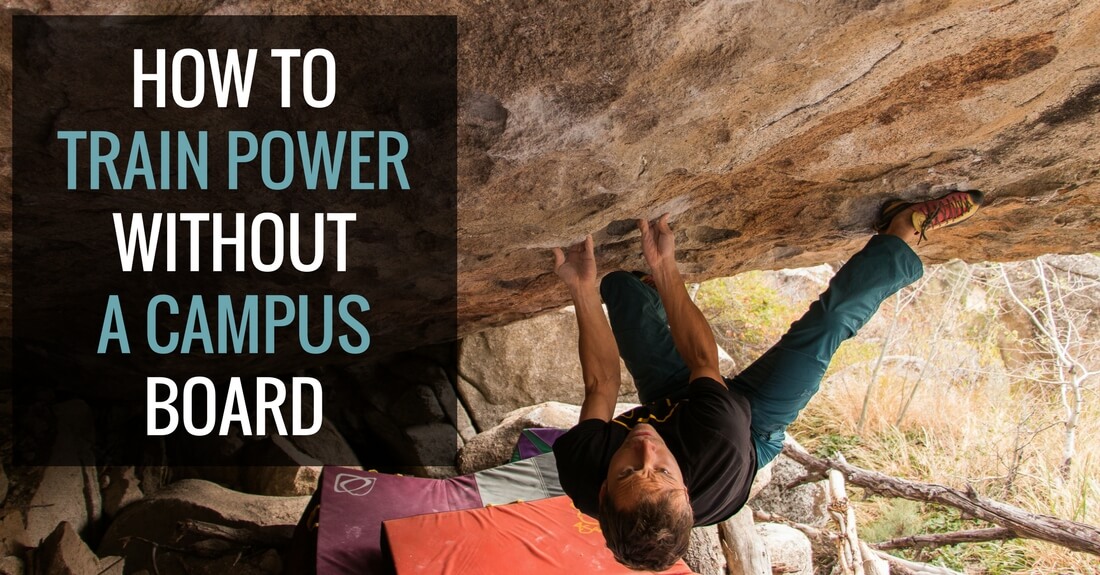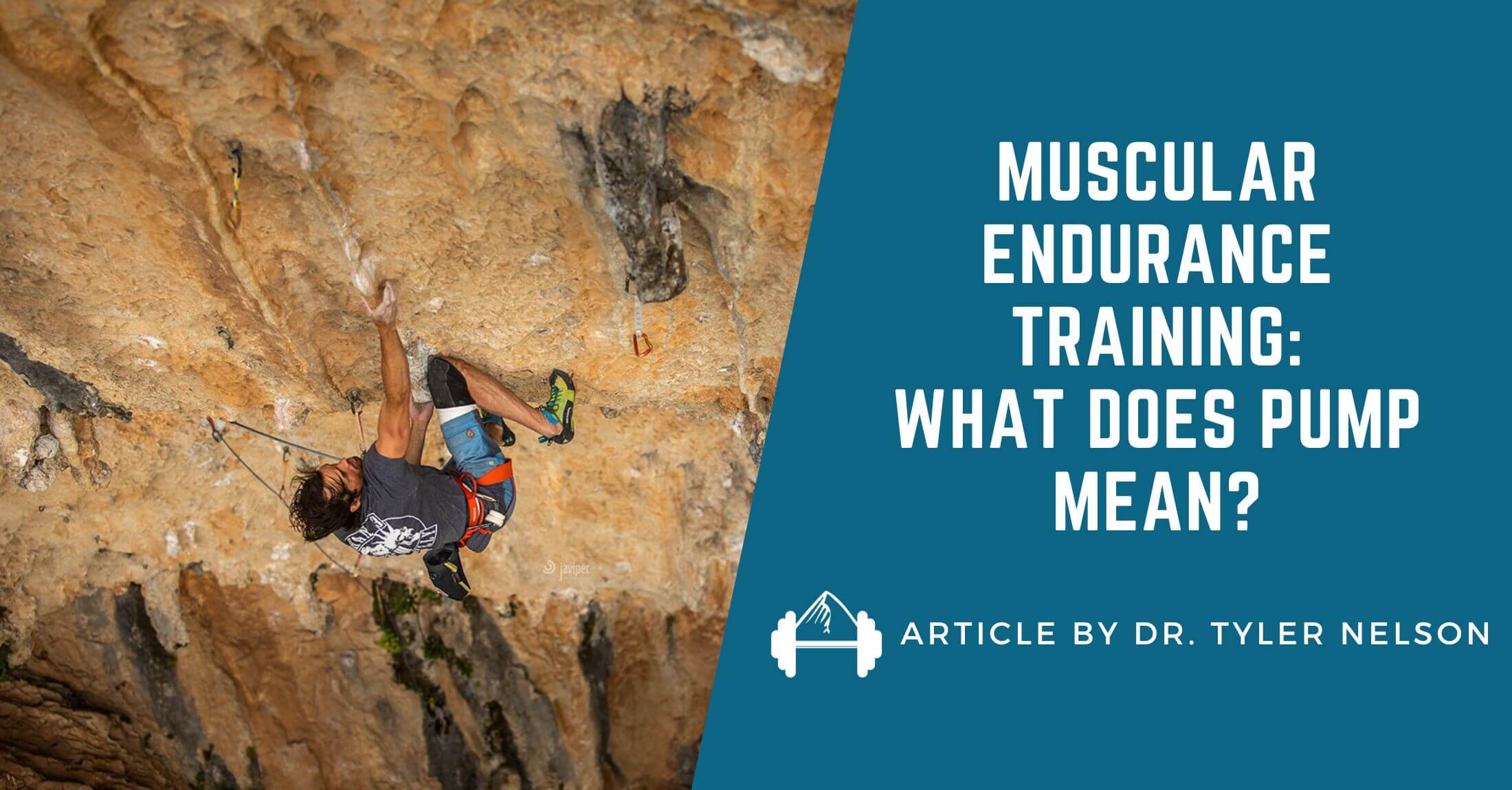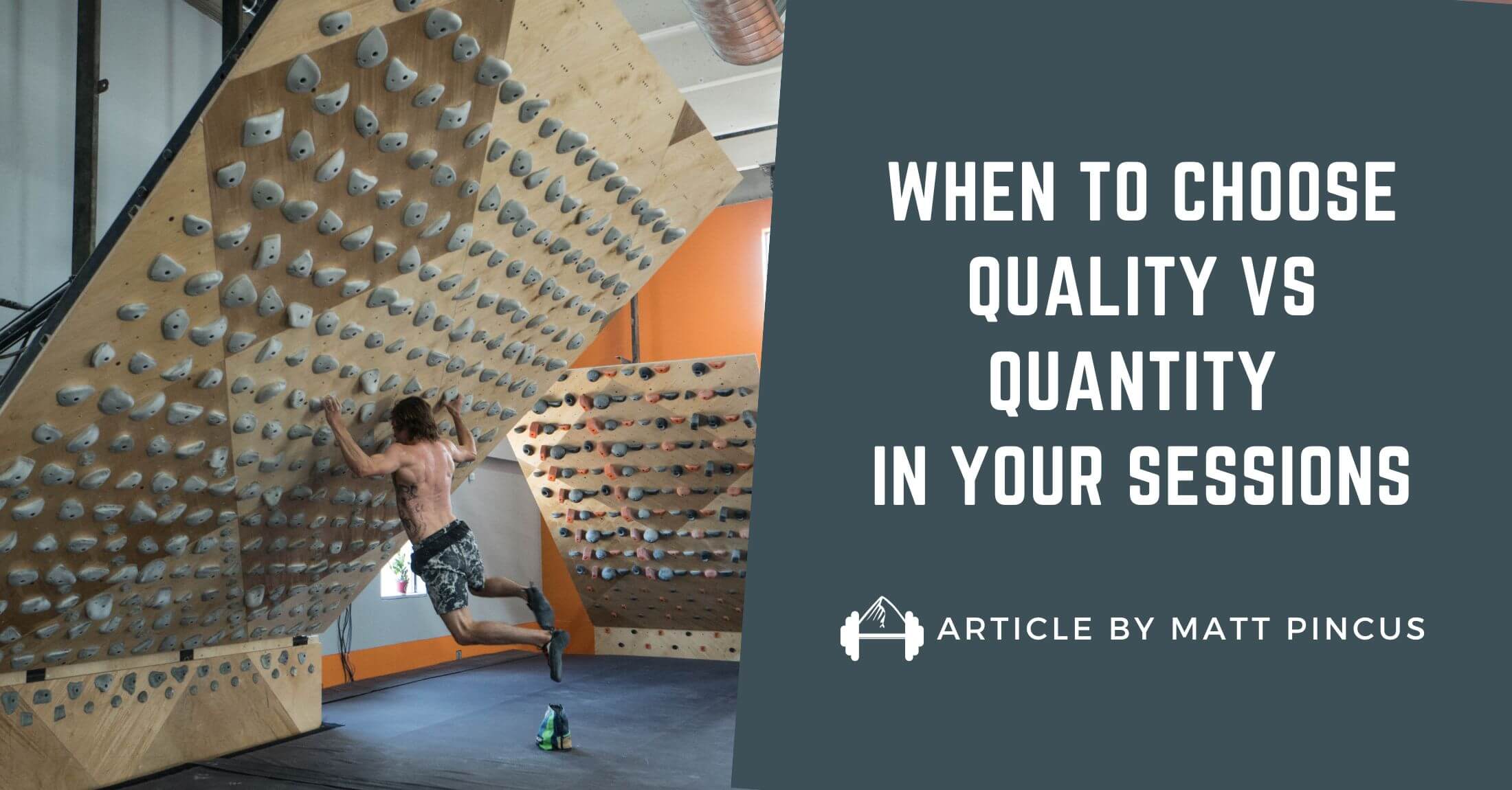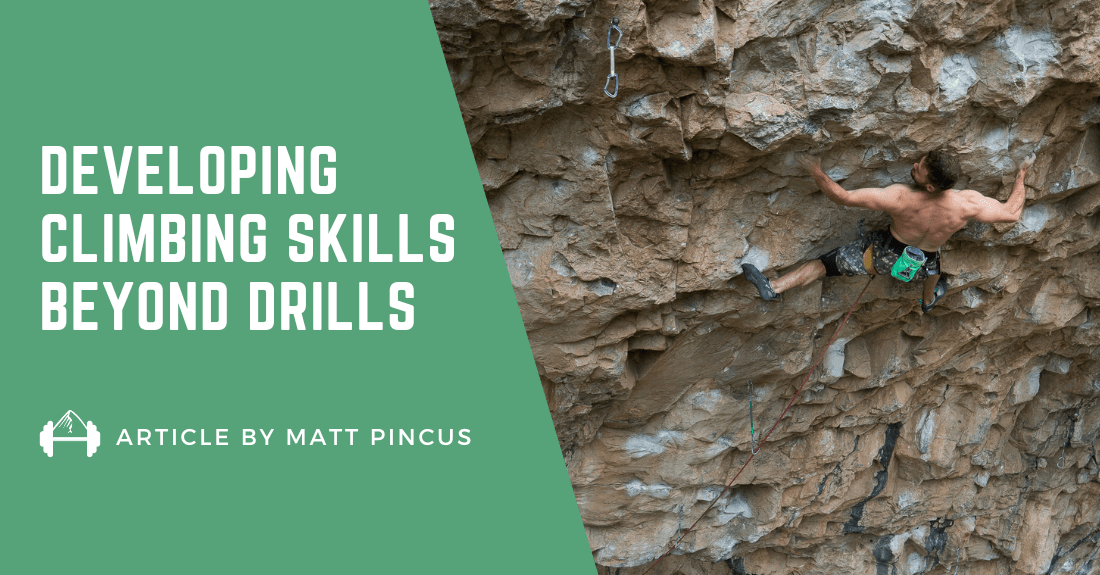One of the most common questions we get here at TrainingBeta is what people should substitute into their training when they don’t have access to a campus board.
Before we talk about what other types of training can take the place of campusing, it’s important that we spell out exactly what we are trying to train on the campus board.
What are You Training on the Campus Board?
Now, if you ask most climbers why they are campusing, the most common answers you’d get would probably be these: to improve contact strength, finger strength, and pulling power. None of these answers is wrong as campusing, when done correctly, will improve all three of these attributes.
However, if we dig a little deeper into what we are actually doing on the campus board, the underlying answer is that we use a campus board to train power.
What is Power?
To continue fleshing out this discussion, let’s define power.
At its most basic level, power is simply our ability to express strength quickly. In other words, power is strength displayed over time. In Steve Bechtel‘s last Climbing Coaching Seminar in Salt Lake City, this is how Steve differentiated between power and strength (which are often confused):
“Strength is the ability to generate force, regardless of the time it takes. Picking up a heavy weight or holding onto a small edge are both displays of strength.”
“Power is strength displayed over time or strength x speed. Jumping into the air or catching an edge at the end of a long reach are both displays of power.”
“We often tell people that power exercises are the ones you can’t do slowly or stop in the middle of. You can see this clearly if you compare a squat (strength) versus a box jump (power). If you stop in the middle of the box jump, you can’t complete the rep.”
Using this definition, we can clearly see that campusing is a power exercise since we can’t stop in the middle of a difficult campus sequence like 1-5-8.
What this also means is that we shouldn’t be thinking of campusing as a way to get stronger. In other words, even though campusing makes your fingers tired, we shouldn’t rely on it as our main finger strength exercise. That’s what fingerboards are for.
Other Effective Ways to Train Power
So, going back to our original question, when we are asking what exercise we should substitute if a campus board isn’t available, what we are actually asking is what is another effective power training strategy.
The good news is there’s an easy answer. Bouldering is amazing power training. However, not all bouldering is created equally. To really see power gains, we need to be trying boulders that are at to slightly above our current level. These kinds of sessions aren’t about having fun with friends, and they shouldn’t be filled with sending. In fact, as a general rule, I like to stay if you send a boulder in a single session it was too easy. We call this kind of training limit bouldering.
Here’s a video from The Power Company that does a great job of really showing you what limit bouldering is all about:
Training power through limit bouldering actually has some benefits over campusing in that the movements are more sport specific since you are actually climbing.
That being said, advanced climbers who really want to incorporate some footless training into their programs but do not have access to a campus board can also substitute boulder campusing for the campus board. For this exercise, instead of laddering up a campus board, you’ll simply be campusing on indoor boulder problems. To do it effectively, all you need is a bouldering wall that’s steep enough that you won’t be bashing your knees on every move.
Here’s an article by Eric Hörst of Training for Climbing that describes how to boulder campus effectively: Training4Climbing: Boulder Campusing
Power Training Reminder
Before you go off and start adding these exercises into your training, here’s an important reminder. Whether you are campusing, limit bouldering, or boulder campusing, you are training power and power training requires quality, not quantity. One good high-intensity rep with proper form is better than a bunch of sloppy, sub-maximal reps. Power training requires that we try right at our max. To do this, make sure you rest enough between attempts/reps so that you can really give 100%, stop as soon as you are no longer able to produce high-quality efforts, and only train power when you are fresh and rested.
About The Author, Matt Pincus
Matt is a boulderer and a sport climber from Jackson, Wyoming, and sometimes in his van on the road. He’s responsible for most of the blog posts and social media posts for TrainingBeta. He’s a seasoned climber and trainer who can provide you with a climbing training program from anywhere in the world based on your goals, your abilities, the equipment you have, and any limitations you have with time or injuries.
Train With Matt
Matt will create a custom training program designed to help you target any weaknesses so you can reach your individual goals. Whether you need a 4-week program to get you in shape for an upcoming trip or a 6-month program to make gradual strength gains, he’ll create a weekly schedule of climbing drills, strength exercises, finger strength workouts, and injury prevention exercises tailored to your situation.

Matt Pincus sending Ghost Moon 5.13d/8b at The Wild Iris, WY





Leave A Comment